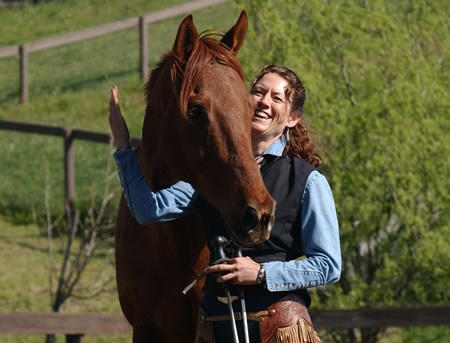Feature: A Joint Effort
 Professor Lisa Pruitt enlists students to help probe flaws in hip and knee implants. — A profile from the November 2010 issue of Prism magazine by Jaimie Schock
Professor Lisa Pruitt enlists students to help probe flaws in hip and knee implants. — A profile from the November 2010 issue of Prism magazine by Jaimie Schock
For people with damaged or painful joints, something like a knee or hip replacement can be the key to a better life. It can also weaken, wear out, or break. That’s where Lisa Pruitt comes in.
A mechanical and bioengineering professor at Berkeley, Pruitt works with orthopedic surgeons and manufacturers to find out why implants fail, so that more reliable materials and better designs can be developed. Retrieved from patients and brought to Pruitt’s lab, the faulty equipment is examined using electron microscopy and 3-dimensional surface mapping to pinpoint the damage. The results are paired with full case histories to assess where the relationship between patient and man-made implant has broken down.
At work on stresses and fractures in polymers, composites and biomaterials since she was a grad student at Brown in the 1980s, Pruitt has studied the complications that can arise with implants depending on their materials, where they’re located in the body, and how long they’re used. Well-designed hip replacements, for instance, can last more than 20 years but are subject to gradual wear. Artificial knees are more prone to fracture because the contact stresses are higher and flaws can more easily develop. The materials chosen for each type of implant must reflect these differences, with some designed more to combat wear and others developed with fracture prevention in mind.
Pruitt has been quick to raise an alarm when, in her view, an inappropriate material was being adopted. “Lisa’s research has been at the forefront of fatigue and fracture in the polyethylene used in total joint replacement,” says Sara Atwood, who worked with Pruitt for five years while earning a Ph.D. “She warned years ago that a new version of the material … had less fatigue resistance despite being better for wear—as other researchers were touting.” Now, some of those replacement joints are causing problems and being brought to the lab, Atwood notes: “Sure enough, [these] retrievals are showing crack propagation and fracture, causing early failure as she and her students predicted.”
Perhaps rare among researchers, Pruitt is also a passionate teacher and mentor. Her lab, says Atwood, is “a small community” where even undergraduates conduct basic testing and failure analysis of retrieved hip, knee, and shoulder replacement implants, and where collaboration among undergraduates and grad students is common.

Pruitt with horse JJ at a summer workshop
“Lisa allows students to take the lead in the lab,” says Atwood, now on a tenure track at Elizabethtown College in Pennsylvania, “and most research comes out of student initiative, rather than her telling us what to do next, or what to research.”
Early involvement with real engineering applications is key to maintaining undergraduates’ interest in the field, Pruitt believes: “Some of our best moments are when we sit in a group meeting, and our surgical colleague comes over, and we have a problem, and we just literally go around the table. … Everyone just kicks in their ideas. And, that’s great: to watch an undergrad have the confidence to throw out what they think is their solution to this problem or some suggestions. It’s huge to watch that!”
Her undergraduates, in turn, carry their project-based learning of engineering design to local middle and high schools. Not only do the students learn more from teaching than from lectures, Pruitt argues, but they help break down stereotypes by showing the community a diverse group of young up-and-coming engineers, both men and women, of various ethnicities.
Pruitt’s student-centered approach – which also includes summer workshops – has earned her a Presidential Award for Excellence in Science, Mathematics and Engineering Mentorship and the American Association for the Advancement of Science Mentoring Award. Yet it doesn’t seem to have detracted from her research. Currently, in collaboration with Michael Ries, an orthopedic surgeon at University of California-San Francisco, and Steve Gunther, a private practice surgeon, Pruitt is investigating the structure-property relationships between ultra-high-molecular-weight polyethylene (UHMWPE), a common material for implants, and different microstructures and process conditions. The work is funded by $500,000 from the National Science Foundation.
Jaimie N. Schock is an editorial assistant at ASEE.
Filed under: Special Features
Tags: Biomedical Engineering, Biotechnology, Higher Education, Research








